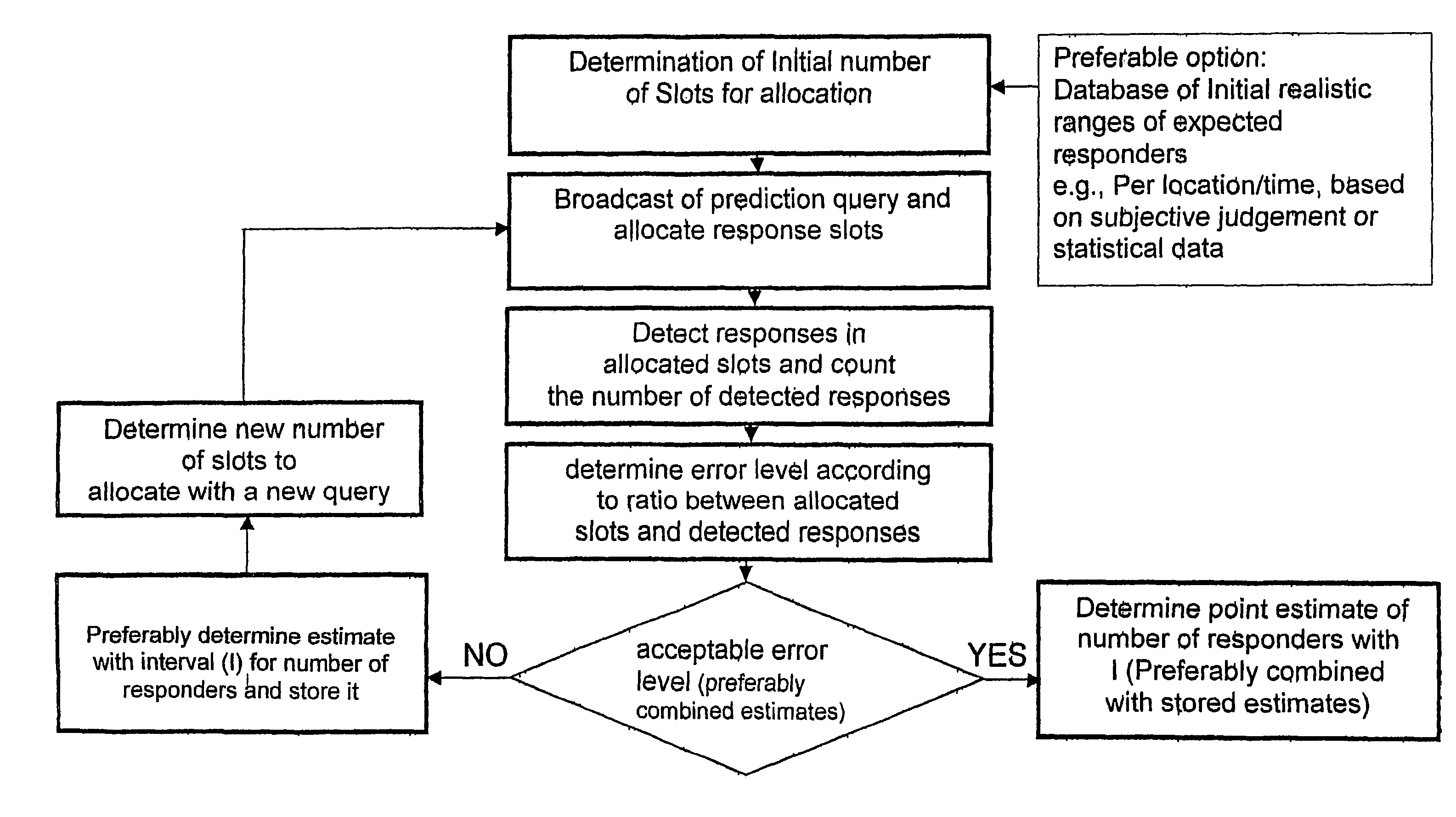Method and system for mapping traffic predictions with respect to telematics and route guidance applications
a technology of applied in the field of method and system for mapping traffic prediction with respect to telematics and route guidance applications, can solve the problems of unpredicted traffic load changes, erratic traffic, and traffic drg effects that are mostly unpredictable, so as to improve p-commerce applications and increase the level of unpredicted traffic
- Summary
- Abstract
- Description
- Claims
- Application Information
AI Technical Summary
Benefits of technology
Problems solved by technology
Method used
Image
Examples
Embodiment Construction
[0035]The present invention provides a preferred method and system for differential mapping of potential traffic loads in forward time intervals in selected places, which could be a result of DRG, in order to provide rapid and effective means for traffic prediction. The mapping system, in which slots are allocated to probe responses, and mobile units that are equipped with route guidance with probe response capability in allocated slots, could be used as a platform for the following modified prediction method. The mobile unit would be referred to as Potential Mobile Mapping System (PMMS). The route guidance capability of a PMMS could be based on either on board or off board route guidance. The prediction method described in the following could be implemented with such platforms, either with or without the implementation of the application of mapping of current traffic as part of this platform. The non mobile part of the mapping system (non mobile systems), including the radio system...
PUM
 Login to View More
Login to View More Abstract
Description
Claims
Application Information
 Login to View More
Login to View More - R&D
- Intellectual Property
- Life Sciences
- Materials
- Tech Scout
- Unparalleled Data Quality
- Higher Quality Content
- 60% Fewer Hallucinations
Browse by: Latest US Patents, China's latest patents, Technical Efficacy Thesaurus, Application Domain, Technology Topic, Popular Technical Reports.
© 2025 PatSnap. All rights reserved.Legal|Privacy policy|Modern Slavery Act Transparency Statement|Sitemap|About US| Contact US: help@patsnap.com


